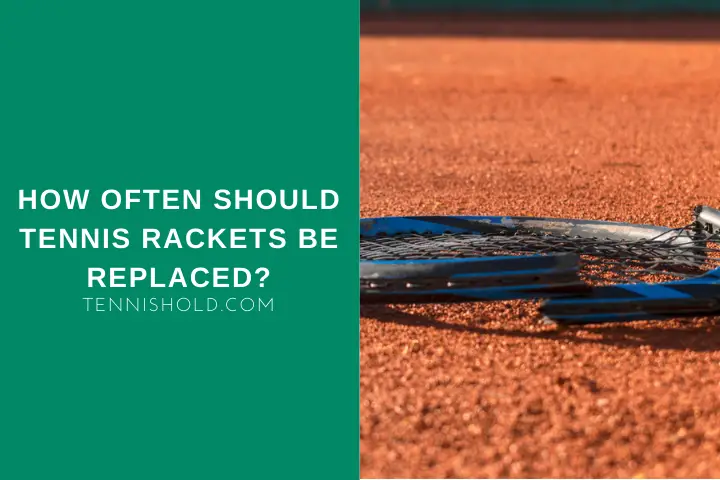Have you ever been watching tennis on the TV and noticed the players switching rackets in the middle of a match? Have you wondered why they change?
I’ll let you in on a bit of a secret.
Despite what you may see from the more high-tempered players on the pro tour, the answer is not “when you get angry and decide to smash the racket into pieces.”
Or at least that should not be the answer.
There are no set criteria for when you should replace your racket. If the racket is taken care of and doesn’t have any cracks, it could last over 10 years. The only reason a racket should be changed is due to frame damage or because you want other specifications.
Chances are, if you have come across this article, you have already spent some time searching the internet.
Well, you can stop the search now! I am going to save you time and answer 4 of the most common questions.
In this article I will be answering:
- How long is a tennis racket good for?
- What material is best for tennis racket longevity?
- Should you replace the racket or just the strings?
- Should you change the racket as a result of new technologies?
Stick around; I will be saving you A LOT of time!
How Long Should The Tennis Racket Last?
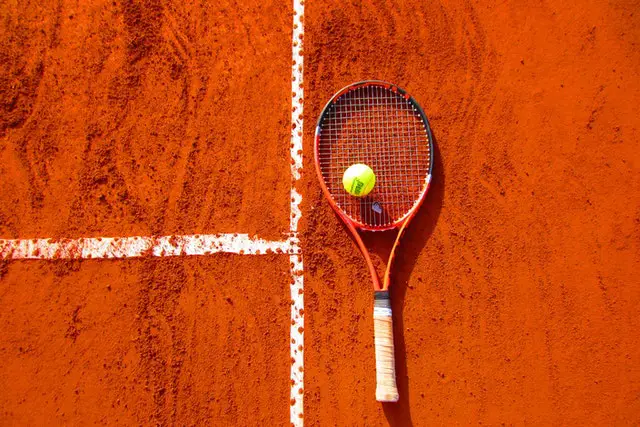
For beginners, a racket will usually last 1-2 years. This is because as your game develops, you will generally want a racket that weighs more and has a smaller sweet spot.
Before we delve deeper, it is essential to acknowledge that some people play more often than others. This, of course, will have an impact on the answer to the question.
I will assume that you are an intermediate-level player on court 3 times per week for 2 hours each time. A total of 6 hours per week.
How often you play is an important consideration. It is not the most critical factor, though. Two elements come even higher up the agenda when determining how long a tennis racket is good for.
The first is play style. How you play will have a significant impact on the longevity of the racket.
If you play like Rafael Nadal, the odds of your racket clashing with the ground are lower.
Nadal is very comfortable taking the ball high. When the racket is higher, it is away from the ground and further from the danger zone.
Perhaps you are a traditional “slice and dice” player? If this is the case, the odds of your racket colliding with the ground are higher. Your racket is closer to the ground.
Have a look at your racket now. Where is the most damage?
The second area of consideration is you, your temperament, and how you take care of things.
When I was a teenager, I had a terrible habit of bouncing the racket on the ground. While it is not as bad as some of my competitors’ habits, it still wears the racket down.
The other thing to consider is string tension. Almost all rackets have a recommended string tension written on them. If you string your racket high above the recommended tension, it can also cause damage.
The material that goes into rackets today is designed to put up some bashing, but there is a limit.
I certainly don’t recommend testing how much of a beating your racket can put up with. Trust me, it’s not a good idea.
The impact of how often we play should be seen as more of a risk increase than a clear measurement.
If you are someone with no temper who plays a comfortable game with the racket high from the ground, it will last you longer.
The rules for the professional players are the same as those for everyone else. A racket is good for as long as you can take care of it.
I have been using the same racket for the past 5 years and have not felt the need to change it. I know of many coaches who have been working with the same racket for over 10 years.
What Is The Most Long Lasting Material For Tennis Rackets?
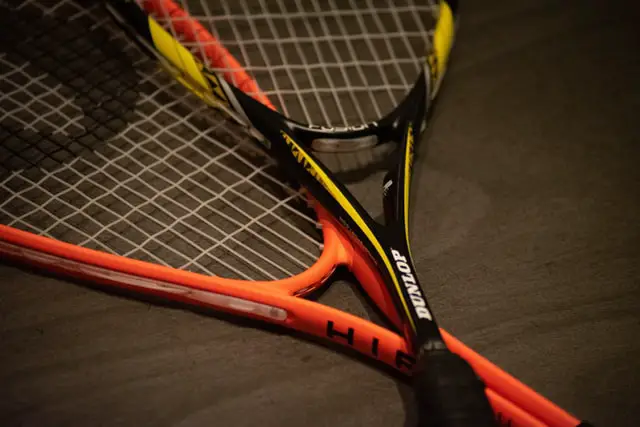
The most common material used to make tennis rackets today is graphite. Graphite is used because it is strong and lightweight at the same time.
As much I enjoy playing with wood, they have drifted out of fashion, to say the least.
The other material often used in rackets today is aluminum. Aluminum is used by manufacturers today as a cheaper alternative to graphite.
If you purchase from any reputable tennis shop, the racket will likely be graphite or aluminum.
When people choose between aluminum and graphite, they do so not because of longevity but price.
The noticeable durability between the two materials is minuscule. There is no concrete evidence to suggest that one is more durable than the other.
A racket made from graphite at the same thickness as aluminum will weigh roughly 42% less. It will also have around 60% more strength.
Regardless of what the racket is made of, if you are someone who mistreats the racket, the material is not going to save you.
It once again comes down to you and how you treat the racket.
Have you noticed the pattern yet?
Should I Replace The Whole Racket Or Just Restring The Old One?
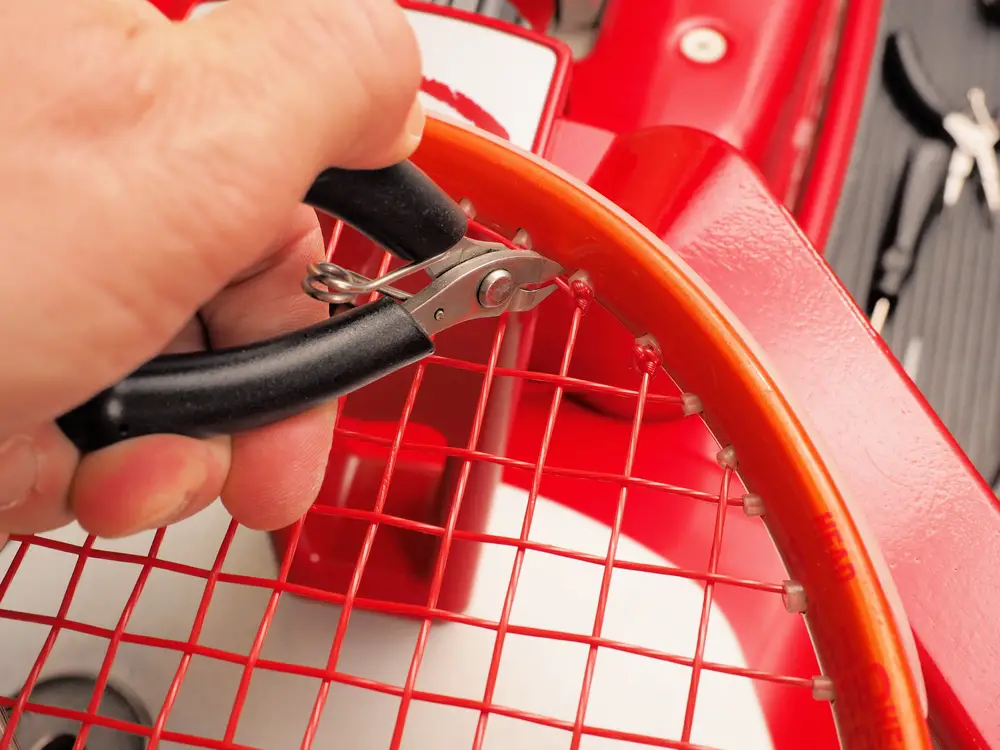
More often than not, the reason players switch rackets mid-match is not due to the racket. It is because of the strings. Or, more specifically, the string tension.
String tension refers to the weight that is applied to the string when the racket is being strung.
The moment a racket is taken off the stringing machine, it begins to lose tension. As you play with the racket, the tension loss is even more dramatic.
Professionals will switch between rackets to ensure that the tension loss is similar. This is so that they don’t feel a noticeable difference when playing with another racket.
The top professionals are in the luxurious position of having lucrative sponsorship deals. The sponsorship deal gives them the chance to regularly receive new rackets.
For the vast majority of us, this is a luxury we do not have.
Provided your racket is not cracked or deformed, I would generally not recommend changing it. I would instead propose a change of string or string tension.
I consider a racket too damaged when the frame has become misshapen. When the frame becomes cracked, the racket will begin to play unpredictably; it will deteriorate further and not give the same feel as before.
As a beginner, you do not need to change your racket based on a specific length of time. It would just be an unnecessary purchase.
If you feel your racket is not performing the way it used to, it could be simply down to a loss of tension.
I do play around with strings and tensions. I like to do this as it lets me experiment with new strings and find the perfect combination of string and tension.
Is It Worth Replacing The Racket Because Of It’s Newer Manufacturing Technology?
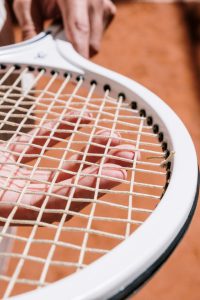
Looking at the content from manufacturers, you may believe that there has been a revolution in racket technology in recent years. When considering materials, this is not the case.
The material used in rackets 20 years ago is much the same as today.
Over the past 10 years, the only technology that has led me to purchase a new racket is the Head’s ASP system. The ASP (Adaptive String Pattern) Technology allows you to change the string pattern on a single racket.
This is not a technological revolution but more a piece of creative brilliance.
As mentioned earlier, I have been using the same racket for 5 years. I work in the sport professionally and am yet to be won over by “new racket technology.”
Over the past 20 years, rackets have become lighter and more head-heavy. Is this down to new technologies or simple tweaking of a product that already exists?
If you are someone who spends time searching the forums, you may have even read stories of pros having custom rackets made to match designs from the early 2000s.
The real revolution has not been in technology but in marketing.
Final Words
The grand 21st-century tennis racket revolution is yet to come.
If you have money to spend and want to try out different rackets, feel free to do it. I would recommend giving as much attention to strings and tension, though.
A new set of strings is undoubtedly cheaper than a new racket and might be the change you are looking for.
The first racket I ever bought was a Head Speed Pro. I assumed if world number 1 Novak Djokovic used it, then it must be a good racket.

